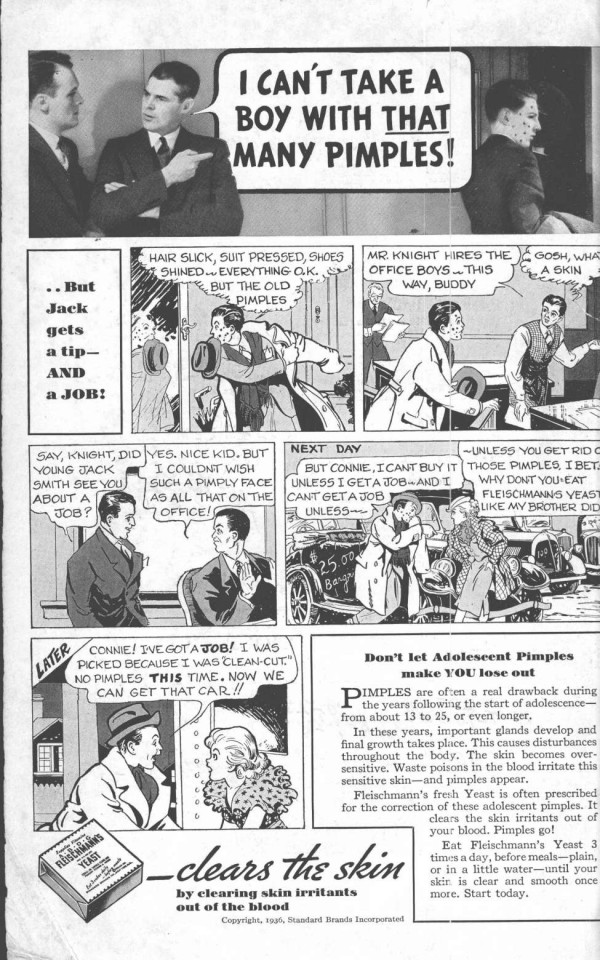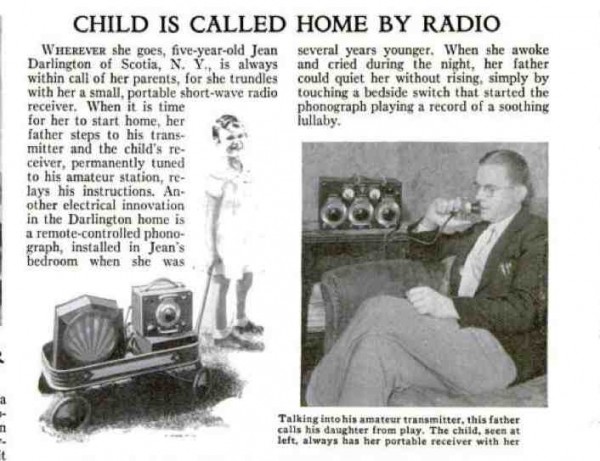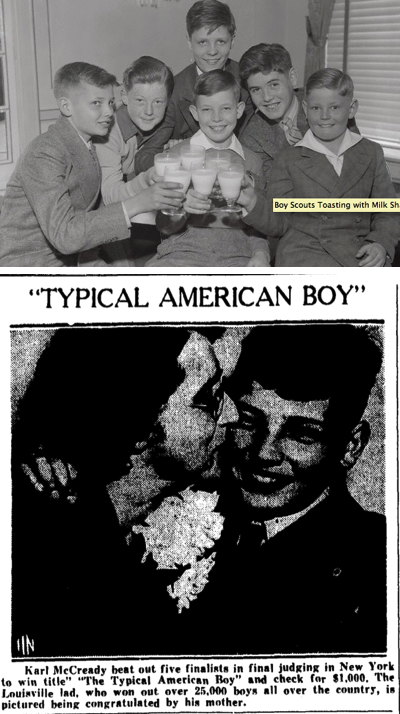1930s
“I Can’t Take a Boy with THAT Many Pimples!”

My question: if this happened to Jack in 2013, could he launch a successful discrimination lawsuit?
Original ad here.
Posted By: Paul - Tue Oct 08, 2013 -
Comments (5)
Category: Beauty, Ugliness and Other Aesthetic Issues, Body, Work and Vocational Training, Advertising, 1930s
Banned LITTLE RASCALS: “Little Daddy”
Wikipedia explanation.
Posted By: Paul - Sat Oct 05, 2013 -
Comments (6)
Category: Censorship, Bluenoses, Taboos, Prohibitions and Other Cultural No-No’s, Movies, Racism, Children, 1930s
A Bath with a View
A predecessor to our famous fellow who attached his lawn chair to balloons.
Posted By: Paul - Tue Sep 10, 2013 -
Comments (4)
Category: Flight, Baths, Showers and Other Cleansing Methods, 1930s
Acrobatic Cello Playing
French musician Maurice Baquet combined cello playing with an acrobatics routine. Images from VU magazine, 1938.


Posted By: Alex - Tue Sep 03, 2013 -
Comments (7)
Category: Music, 1930s
Borrah Minevitch & His Harmonica Rascals
Posted By: Paul - Tue Aug 27, 2013 -
Comments (6)
Category: Movies, Music, 1930s, 1940s
Pax Victis
In 1930, the residents of Dedham, Mass. paid $12,600 for a war memorial on which was inscribed the phrase "Pax Victis." But six years later a Latinist pointed out that the phrase meant "Peace to the conquered," which didn't quite sound right. It's along the lines of 'Slavery is Freedom.' So the city paid $400 to change the inscription to "Pax Victoribus" -- "Peace to the victorious." But apparently that didn't sound quite right either because eventually it was changed to read simply "Pax." [Waterville Times - Apr 16, 1936 (pdf)]
Posted By: Alex - Fri Aug 16, 2013 -
Comments (12)
Category: Statues, Monuments and Memorials, War, 1930s
Life Before Cellphones

Original story here.
Posted By: Paul - Sun Aug 11, 2013 -
Comments (4)
Category: Radio, Chindogu, Children, Parents, 1930s
Listerine Cures Dandruff
1937 ad for Listerine. From what I understand, Listerine really is an effective cure for dandruff. However, I assume that most people were reluctant to rub mouthwash in their hair. And nowadays, no company in their right mind would admit in the ad that they tested the product on cute rabbits.
Posted By: Alex - Tue Aug 06, 2013 -
Comments (5)
Category: Hygiene, Advertising, 1930s
Don’t kill your wife with work
A 1936 advertising appeal to householders in Willesden, Middlesex, England. [source: Newsweek - Apr 11, 1936]
Posted By: Alex - Mon Aug 05, 2013 -
Comments (8)
Category: Advertising, Wives, 1930s
Most Typical Boy
A little over a month ago I posted about how, back in the 1930s and 40s, there used to be "Miss Typical" contests. Turns out there were male versions of these contests as well. The picture below shows the 1939 finalists for the "Typical American Boy" contest. The winner was Karl McCready, 13, of Louisville, Kentucky (sitting in the front row, on the left). You can see some footage of the Typical Boy contest over at efootage.com.Can't help but wonder what kind of child would have been produced if Typical Boy and Miss Typical had ever gotten together.

Posted By: Alex - Fri Aug 02, 2013 -
Comments (4)
Category: Contests, Races and Other Competitions, 1930s

| Who We Are |
|---|
| Alex Boese Alex is the creator and curator of the Museum of Hoaxes. He's also the author of various weird, non-fiction, science-themed books such as Elephants on Acid and Psychedelic Apes. Paul Di Filippo Paul has been paid to put weird ideas into fictional form for over thirty years, in his career as a noted science fiction writer. He has recently begun blogging on many curious topics with three fellow writers at The Inferior 4+1. Contact Us |




